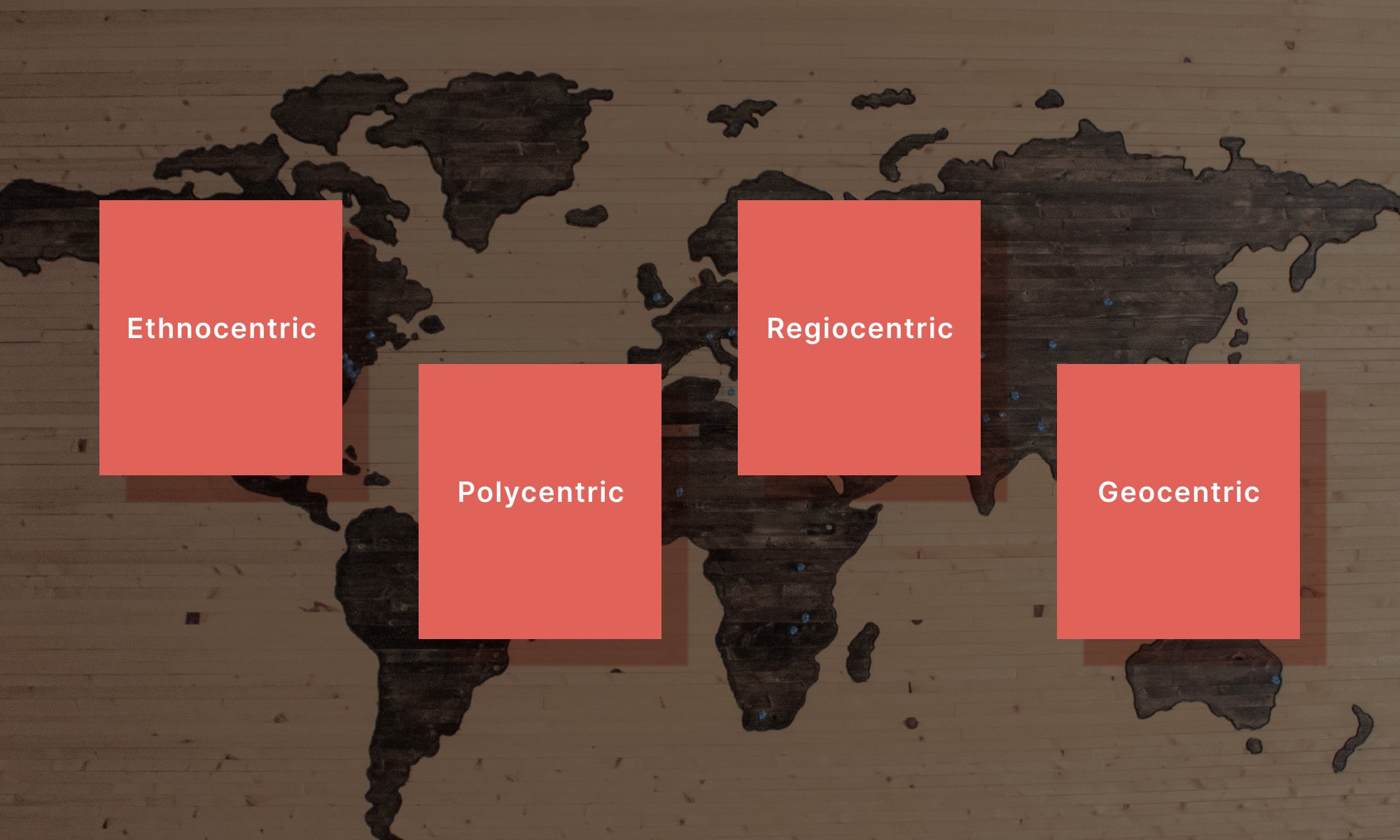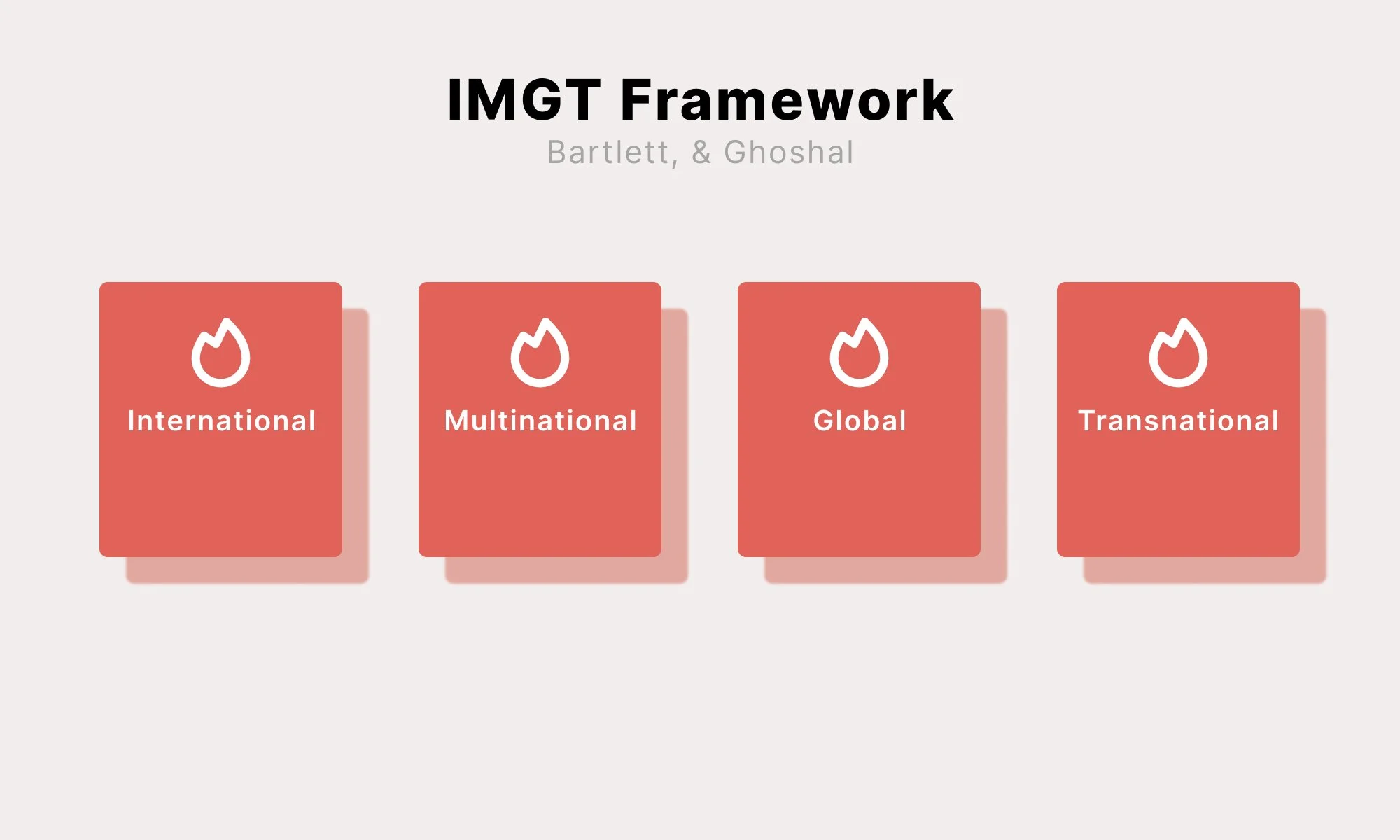International Strategy: Establishing a Global Impact
An international firm is involved in significant activities abroad (outside its home country) and has substantial transactions with foreign organizations. This definition seems necessary, but not sufficient to pinpoint international enterprises, which take part in complex foreign activities. There are two main ways of identifying an international firm: quantitatively, and qualitatively. The former approach uses mathematical ratios such as the Foreign to Domestic Sales Ratio, or the Foreign to Total Employees Ratio to provide an observable, objective number summarizing the degree of internationalization of the corporation. The latter method (qualitative) provides more context and explanation. Within the qualitative analysis, there are two frameworks you can deploy to understand an international firm: EPRG, and IMGT.
Understanding an International Firm: EPRG
First developed in 1989, EPRG stands for Ethnocentric, Polycentric, Regiocentric, Geocentric. These are four possible configurations of international firms. We can classify global companies following those buckets, based on their characteristics.
An ethnocentric firm can have several foreign subsidiaries, but the strategic and decision-making power is centralized in the home Country, where the management steers the wheels of every foreign associate. Such an approach implies standardization and little-to-no decision-making power within subsidiaries.
A polycentric organization has a more open degree of independence across subsidiaries, compared to an ethnocentric company. The polycentric values the difference in culture and business dynamics across Countries, and appoints locals to be in key management and operational positions. The subsidiaries have decisional power at a national level, and the headquarter intervenes only in case of necessity. Each subsidiary is independent of the other, but all of them are connected to the headquarter.
A regiocentric business places even more importance on cultural and regional differences across borders. Locals (at a regional level) are appointed to key positions in the subsidiaries. In this international configuration, it is the headquarter that makes the bulk of the decisions, while the subsidiaries around the world have the main goal of executing those decisions. However, the flow of communication between each subsidiary and the headquarter is higher compared to the former two configurations.
A geocentric organization has a worldwide identification. There is a high degree of interdependence and communication between subsidiaries and the headquarter. The top talent from around the world is developed and placed in key positions at subsidiaries. Management styles differ within each subsidiary, which has a lot of decisional and executive independence and accountability.
IMGT model: how to identify an international firm
While EPRG is a framework determined by internal firm characteristics (i.e., the company mindset), IMGT is market-driven. This means that the four dimensions identified by the IMGT model are dependent on the external environment.
As an acronym, IMGT stands for International, Multinational, Global, Transnational. These are four types of worldwide organizational strategies—a continuum.
The International strategy is a "coordinated federation". The decision-making power is kept at the headquarter, where the knowledge is generated and transferred to the subsidiaries. The core competencies of such an organization are centralized in the headquarter, while secondary competencies are developed in subsidiaries.
The multinational strategy is a "decentralized federation". Every subsidiary is adapted to the host country, and there is an emphasis on localization. That means every subsidiary adapts its offerings and operations to the culture they are embedded in, as opposed to conforming to the home country's culture. In a multinational strategy, subsidiaries are independent at a National level.
The global strategy aims at globalization by integrating worldwide activities and striving to keep costs low and efficiency high. The main role of subsidiaries in such a context is to carry out the strategies set up in the headquarter.
The transnational strategy is a fully integrated network where localization and globalization coexist across subsidiaries. Innovation and responsiveness are among the key skills of a transnational business, where each subsidiary contributes independently to the broader worldwide activities of the company.
The Objectives of internationalization: why do firms expand outside of their home country?
The reasons for which organizations expand internationally are depicted thoroughly by Dunning's model, which identifies four possible internationalization objectives:
Resource seeking: When a firm intends/needs to expand abroad to get access to resources that do not exist in their home country, or which have different characteristics abroad. This is the case for Apple and Foxconn. The latter is Apple's hardware developer. Apple outsources its hardware development to underdeveloped Countries where the cost of labor is significantly lower compared to the USA.
Efficiency seeking: When seeking efficiency, a global organization expands across borders to pursue economies of scale/scope, or risk diversification. Economies of scale is an economic phenomenon stating that as the amount produced increases, the costs of production decrease accordingly and relatively to the produced quantity. Economies of scope refer to the ability of a firm to use existing production facilities and processes to produce complementary products to the main ones, hence diversifying risk and broadening the offering.
Market seeking: Sometimes, foreign markets present some attractive characteristics such as high volume or high growth. For this reason, international firms may want to enter those markets to gain market share and establish their presence. This is what Amazon did in China, where Alibaba is still the key eCommerce player, but now faces the patient rivalry of the US giant.
Strategy seeking: While entering a market to gain market share and capture value is a market-seeking objective, becoming a participant in high-potential/strategic foreign markets can be a strategic decision. Such a decision may be driven by the desire to raise brand awareness or "follow the first movers".
Should every firm go international? A final consideration
Internationalization is not necessary for every firm. The wide majority of organizations will not expand internationally. That is respectable. Understanding your objectives and consciously deciding to remain local is just as valuable as resolving to go international. This post touched on some crucial concepts of International Strategy but is not intended to be a deep dive on the subject.
RESOURCES
Perlmutter, H. (2017). The Tortuous Evolution of the Multinational Corporation. International Business, 117-126. DOI: 10.4324/9781315199689-7
Bartlett, & Ghoshal, S. (1989). Managing across borders: the transnational solution. Harvard Business School Press.


